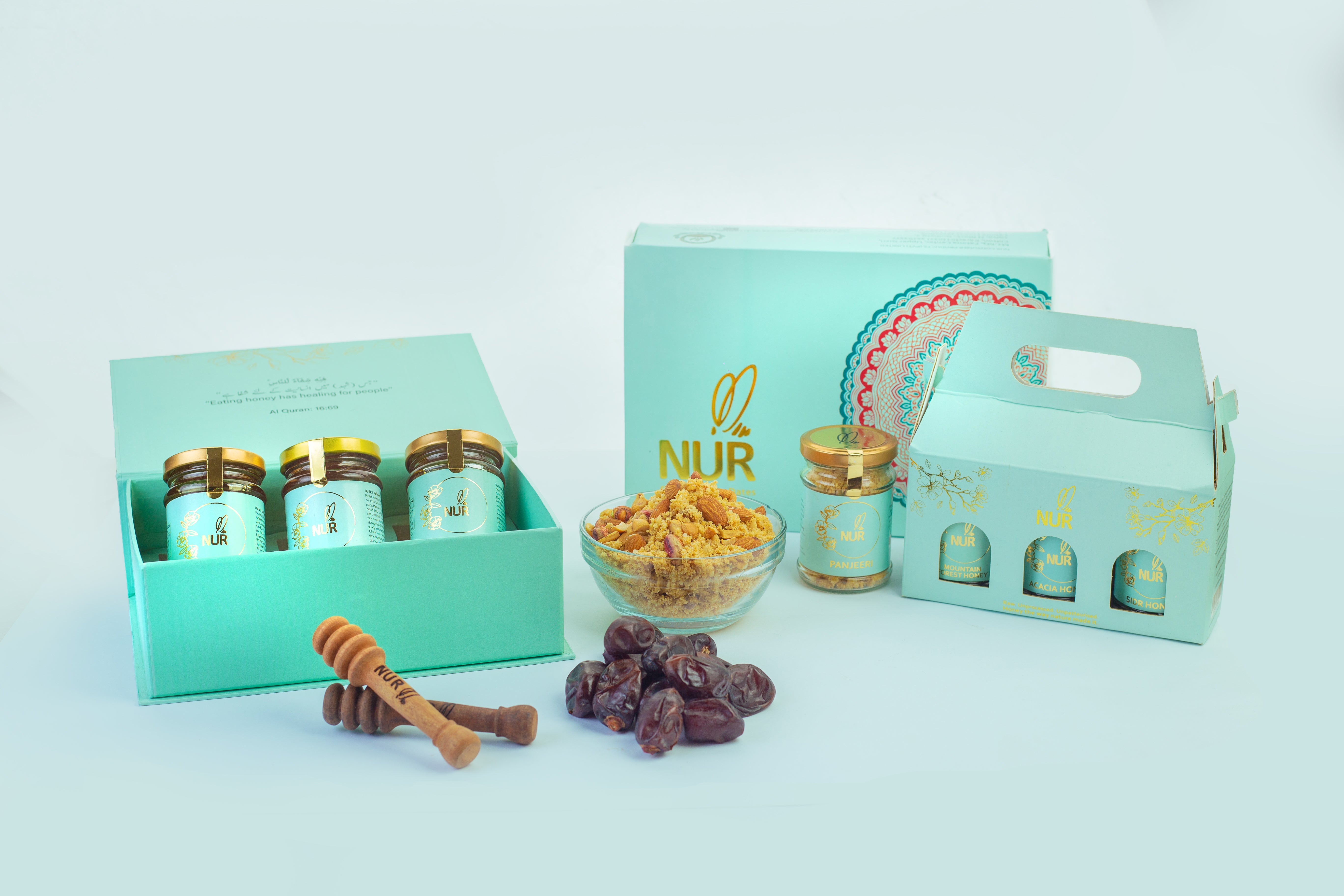Honey, nature’s golden sweetener, is the result of a seamless collaboration between humble honeybees and humankind. Did you know that it takes the nectar of around two million flowers to produce one pound of honey? The little pollinators work tirelessly with great precision to produce this golden elixir that is a testament to Mother Nature’s efficiency. The journey of pure raw honey from the hive to the table includes multiple facets, each performing at its finest.
We at Nur Products ensure that you get high-quality raw honey like Sidr Honey and Acacia Honey, which make the highlight of your kitchen shelf. Let us show you our process of producing pure raw honey from hive to table.
Nectar Collection:
Honey bees move from flower to flower to collect nectar. They have a special straw-like structure that enables them to suck the nectar out of the flower. As they fly from one place to another, pollen grains fall to the ground, making the pollination process highly efficient. Interestingly, one honey bee only makes one-twelfth of a teaspoon of honey in a lifetime.
Honey bees store the collected nectar in their stomachs. It is the alchemy of the honey stomach that transforms complex sugars into a simpler form.
Storage in Honeycomb:
Once the enzymes of the honey stomach help reduce the water content in the nectar, honey bees come back to the hive. They regurgitate the nectar in a geometrical hexagonal structure called a honeycomb. The honeycomb structure is made with beeswax, which not only stores honey but also provides support for the hive.
Evaporation:
Tiny collectors start fanning the nectar with their wings to help further evaporate the water content in the nectar. This process thickens the nectar, which results in concentrated sugars finally turning into the golden liquid we know as honey. The water content of honey is typically 17-18% when it is completely ripened.
Sealing with beeswax:
When honey is made into a viscous substance, bees cap the honeycomb with beeswax, which is produced by their special glands. Sealing the honeycomb is honey bees' own way of saying that the honey is ready for use. Also, sealing keeps the honey safe from external contamination and preserves its freshness and sweet smell.
Harvesting the Honey:
After bees are done with their part, here comes the role of beekeeper. The beekeeper works diligently to bring the pure, raw honey from the hive to your table. The frames are removed carefully, and the sealing of beeswax is cut gently to allow the honey to flow out.
Beekeepers use various methods to extract the golden sweetener, like centrifugal force. We at Nur Products make sure that the honey stays in its purest form with no compromise on its taste. The honey is extracted and ready to be put into jars.
Packaging:
Quality assurance is a pivotal step in honey collection. Various quality checks are performed in our laboratory to keep the honey to its highest standard. Not only the taste but also the packaging are thought through, which preserves the natural flavor and aroma of honey. After quality assurance, the honey is packaged into well-designed honey jars to reach your table.
Ready to take the plunge? We invite you to indulge yourself in pure, raw honey goodness. Embrace the authentic, wholesome deliciousness of our Sidr Honey and Acacia Honey at Nur Product. You will forget the unhealthy and artificial sweeteners; that's guaranteed!








